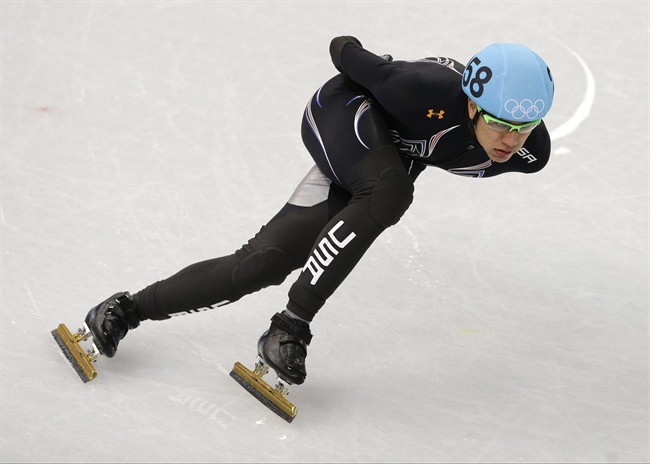TORONTO – Now more than ever, technology is at the forefront of the Olympic Games – from timing and judging techniques, to intricate displays at the opening and closing ceremonies.

But who would have thought that so much technology would go into uniforms?
Take, for example, Team USA’s new speed skating uniforms, featuring what some have described as “little grey crotch circles” on the inner thigh.
The detail is no laughing matter; the grey patch is called “ArmourGlide,” a high-tech material that reduces friction by up to 65 per cent and presumably helps skaters cut down on inner-thigh friction that can slow them down.
Built with help from Under Armour and fighter-jet-maker Lockheed Martin, the suit – dubbed the “Mach 39” – is laden with technology. It uses strips of polyurethane material that blocks airflow on the forearms, calves and forehead, and a new diagonal zipper, according to a report by Forbes.
The suit was put through over 300 hours of wind tunnel testing to make the most of its features.

Get daily National news
The U.S. speed-skating team isn’t the only one embracing high-tech materials and testing techniques. Canadian speed skaters are also wearing some sort of high-tech contraption – though obviously missing chafe-protection – but the team has remained tight-lipped as to what technology has gone into the suits.
According to a report by The Globe and Mail, the suits have a very thin Kevlar base layer that is strong enough to withstand the slash of another skater’s blade, but also have enough breathability for “maximum acceleration” and body temperature control.
Olympic ski uniforms made by outerwear company Columbia Sportswear for the Canadian, U.S., and Russian teams feature “Omni-heat Thermal Reflective Technology,” that provides more warmth with less bulk.
The right uniform really can make all the difference when it comes to setting records: full-body polyurethane swim suits were banned from competition after propelling a number of swimmers to medals in 2008, including Michael Phelps. He set seven world records at those Games, in his high-tech LZR Racer suit developed with the help of NASA.
The suits were designed using very thin material that made athletes more buoyant in the water, causing them to swim closer to the surface of the pool, cutting down on drag.
Less drag means more energy; more energy means faster swimmers and better results.
Equipment is also getting a high-tech update for the Sochi Games.
The U.S. team’s bobsleds were designed by luxury car maker BMW and former race car driver Michael Scully in the hopes of designing – you guessed it – a sports-car style bobsled.
According to Forbes, the team lowered the bobsled’s center of gravity for improved aerodynamics, used computer design tools to create wind-tunnel tested prototypes, and even used technologically advanced paint that is lighter and more durable.










Comments